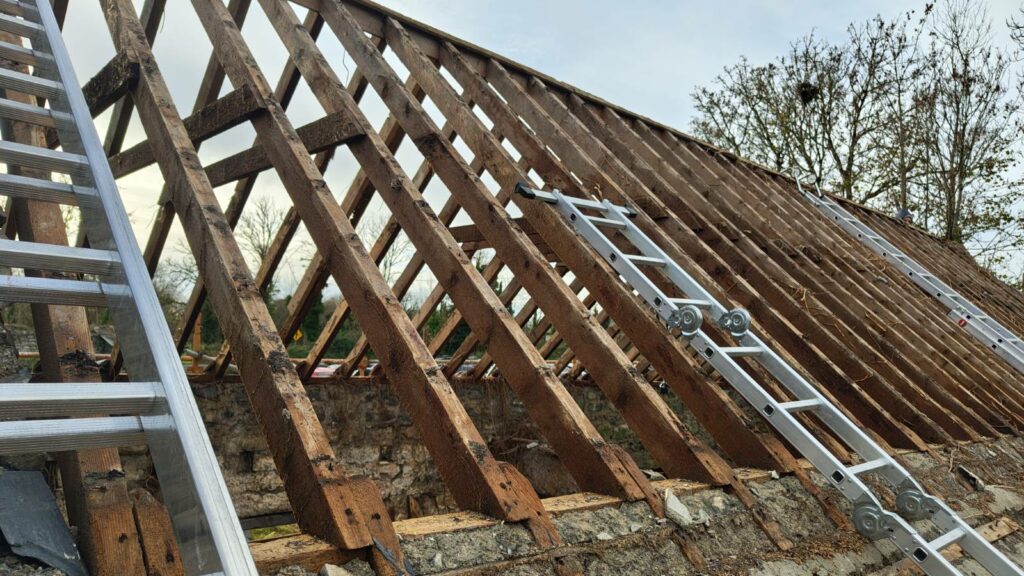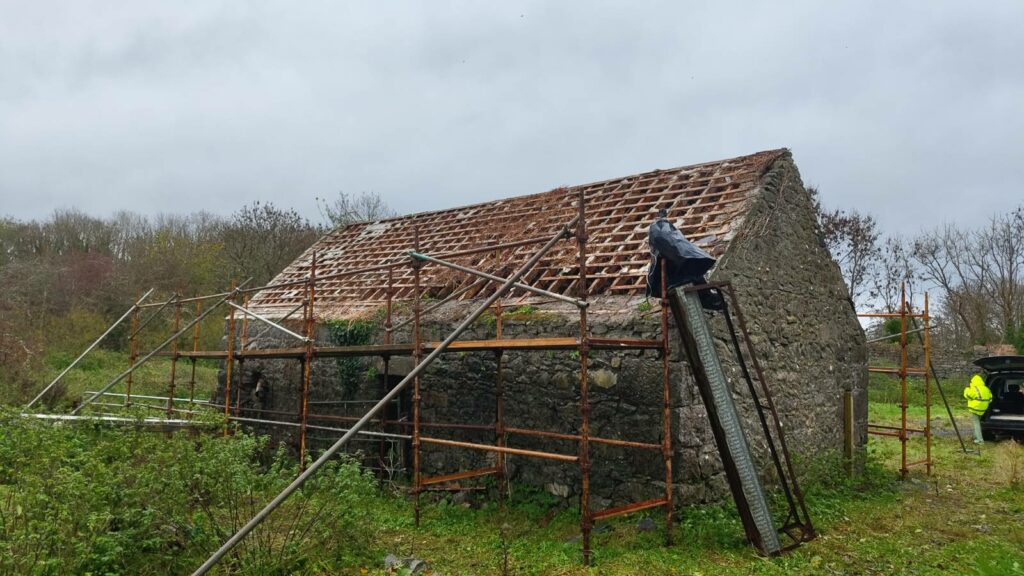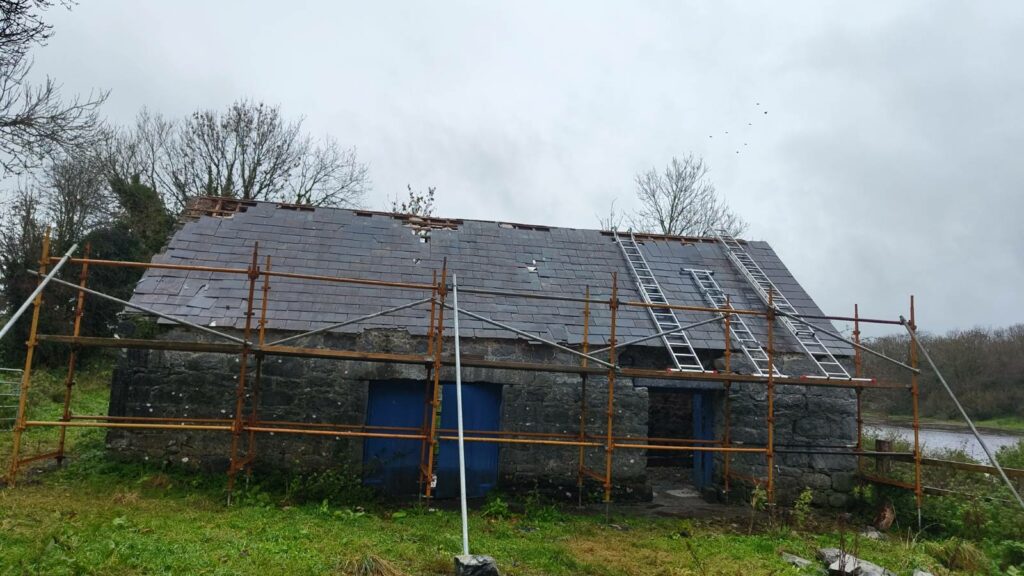A sheep farmer from Ballylee, Gort, Co. Galway who has just concluded work on her repair project under the latest tranche of the Traditional Farm Buildings grant scheme, was required to apply for a derogation licence to proceed with works after the building was found to be a good site for bats.
Margaret Hennigan. who keeps Suffolk sheep, said that as a result of the find and the requirement, the start of works was deferred to October 15.
The building is a roost for the common pipistrelle bat – but also lesser horseshoe bats, Brown long-eared bats and soprano pipistrelle bats were also in the building.
The aim of the licence and the Heritage Council is to try to ensure that works will cause the least disturbance to the protected bats, taking into account the time of year, particular materials and methods.

“We think complying with the licence conditions and carrying out these works will safeguard the existing roost, and also enhance it further, making it a very good place for bats,” said Anna Meenan, project manager, Traditional Farm Buildings Scheme, the Heritage Council.
“There is mixed broadleaved woodland, hedgerows and treelines all around this building, great foraging and feeding liens for them. There is also a watercourse,” she said.
Challenging timeframe
“It is a challenging timeframe for applicants, as grants are allocated in a calendar year, and must be drawn down in the year, that a grant is offered,” the project manager said.
The mapping records for the building show that the structure has been there since at least 1841, and formed part of a much broader array of what appear to be similarly scaled structures.
The structure contains two separate spaces. The smaller space historically had a storage area at first floor level.
“The building was used in the past for the storage of food and meat. I used it for my sheep, and will be using it as a roosting area for bats,” Margaret said.

“The roof is a reconstruction likely from the early 20th century. It comprises natural slate on timber collared rafters, lime parging to the underside and timber sprocket bedded into and over the walls.
“The roof slates are French grey type slates. Some are damaged, but any that are salvageable have been retained. French grey salvage slates have been sourced for where replacement slates were needed,” said Margaret.
“With the roof slates and ridge caps off, it was possible to see all the roof timbers, with some timbers needing replacement, but any that could be retained were reused. Some of the stonework needed pointing and natural hydraulic lime was used as an ingredient for the mortar.
“Any original timbers that could be saved were retained. Otherwise new timbers were treated, cut and fitted.”
Delivered milk to WB Yeats
As young boys, the father and uncles of the owner of this building used to, on occasion, deliver milk to W.B. Yeats in Thoor, Ballylee.
Another fascinating gem of information is that the long stone lintel over the larger door opening is understood to have come from the cemetery at the Kilmacduagh monastic site.
It is a “real privilege” for Margaret to be part of the continuing story of this enduring built heritage wonder, she said.
Her Teagasc advisor, Keith Fahy, assisted with the initial administration for the Heritage Council which manages the scheme on behalf of the Department of Agriculture, Food and the Marine (DAFM).

“The grant offer from the Heritage Council made it possible for me to undertake this project which was very rewarding,” Margaret said.
“Working under the guidance of roofer, Mark O’Flynn, was my son, Tom Hennigan, daughter, Siobhan Hennigan and Cormac Folan. Conservation architect Don Silke of Silke and Co. Galway, who provided analysis, method statement and specification report for recommended works which was a great help to us.
“Ruth Minogue, ecologist, of Minogue and Associates, carried out the bat and bird survey.
“The Heritage Council’s input was invaluable to me. Because I was working with the Heritage Council, a lot more thought and research went into sourcing materials and products than might have done, if I was working without their support,” said Margaret.
